Menswear’s Third Way
Hello and welcome to the age of Menswear’s Third Way - neither sartorial nor workwear - explained to you by Mateusz.
We all know that the age of #menswear / iGent / sprezzatura - or, the era of the great “sartorial” menswear revival fueled by countless pictures of Italians in their just-a-bit-too-tight suits - is well (and for well) behind us, its final nail in the coffin being the COVID stay-at-home times that provoked most of us to start dressing down, never to fully recover (in a fashion sense, of course) again.

Times have changed - and, in my understanding, we are in an era with a proclaiming macro trend that could be thought of as Menswear’s Third Way.
In a similar way as “Third Way” politics from a few decades ago tried to offer neither truly capitalist nor socialist, but neoliberal economic policies - marketing themselves as a new, better compromise between the old-school conservatives and the left - the current state of menswear is all about striving to find a new way in between the formal dress code of suits & sportcoats and the very casual looks of workwear & streetwear.
Not so long ago, those two were rather far apart - although sometimes connected by high quality and high prices of their favoured goods, denim heads and menswear aficionados did not really blend. Both groups had their own vintage references and archetypes: while the former were obsessed with 20oz, standing-on-their-own Japanese selvedge denim and heavy-duty work boots, the latter preferred to talk about their spalla camicias, con rollinos, milaneses, and other fatto a mano details. Ultra-light, delicate, close-fitting Italian-style suits did not really go well with the rough, heavy raw denim - both literally and figuratively.
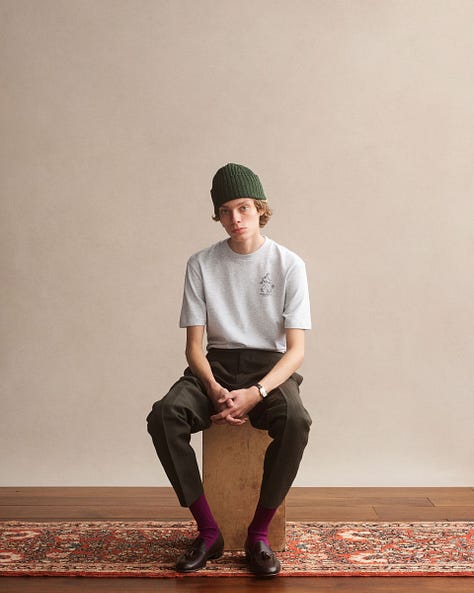
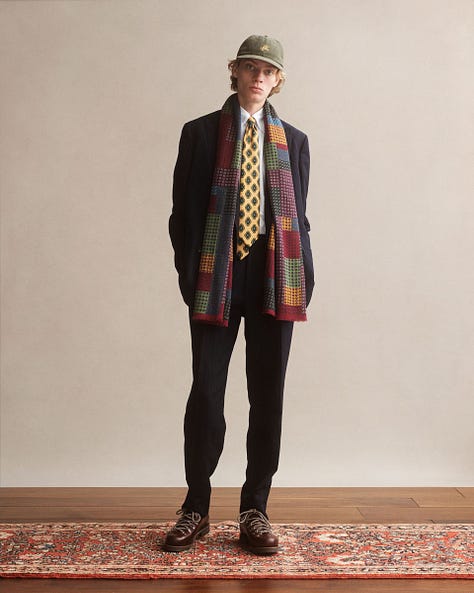
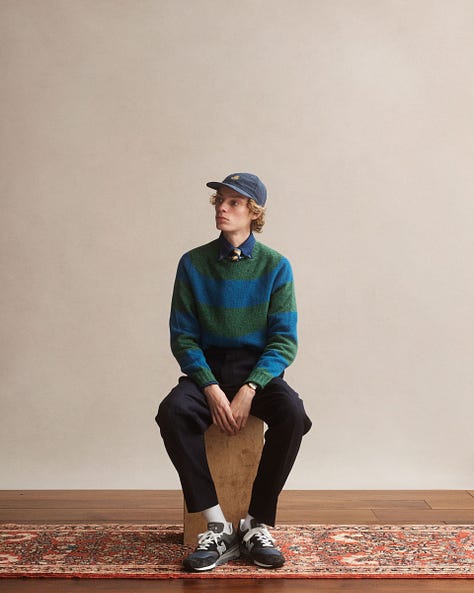
The age of neo-Ivy we entered later - think of Drake’s rise to prominence - started to bring these two a bit closer together. While definitely not converting the die-hard fans at ease, it paired the less radical versions of both groups’ pieces of choice to good effect. It was nothing new, theoretically - yes, we knew how to wear sportcoats with jeans before - but it was still nonetheless a fresh approach and a way to make tailoring relevant (and easy to wear) again. You bought more loafers, because they still technically were leather shoes, but more comfortable and less pretentious than the sleek lace-ups. You chose tweeds or linen over worsteds, because these fabrics’ versatility extended beyond full-on crisp shirt-and-tie business combos. Your jeans of choice were regular-cut selvedge denim not because you wanted them authentic, you just believed them to be superior to slim-fit stretchy jeans. You sought more balance in your wardrobe.
It was the fundament of what happened next - or, more precisely, what is still happening right now.
For me, the sign of the times I witnessed - and that made me think about it - as when, a few months ago, while browsing Instagram, I stumbled upon a post or story from this guy (an influencer, if you will) who was considering buying his first sportcoat, but was afraid whether he would actually wear it. It struck me. I was like, “man, I can’t believe you don’t have any!”, as for me it had been quite obvious that any menswear-related IG guy I followed probably had one. It seemed especially weird since I had been following this account for quite some time, really liking the content and feeling it was totally within my scope of interest. Also, this guy followed and was being followed by many mutual accounts, which meant he was indeed part of some menswear community - not a completely random fashion influencer of a different core. How was this even possible?

And then I realised - not only had my personal taste evolved, but also the general centre of gravity had shifted; while we, the #menswear guys, started dressing down, getting to know overshirts and fatigues, the other groups - workwear and streetwear guys - started experimenting with tailored trousers and loafers. This accelerated: with less distance between the different spheres, the other started to seem more approachable and inviting to borrow style cues from. Our groups started intertwining - starting from very different points, far, far apart - we all progressed and crossed paths somewhere, ending up closer to the middle.
There formed a kind of new norm, a new broad style, where you can’t really tell whether some pieces - like penny loafers, Tyrolean shoes, western shirts, chambray workshirts, officer chinos, carpenter pants, field jackets, chore coats - are inherently more ours or theirs, as they are a common choice among both groups, fluently transitioning between contexts.
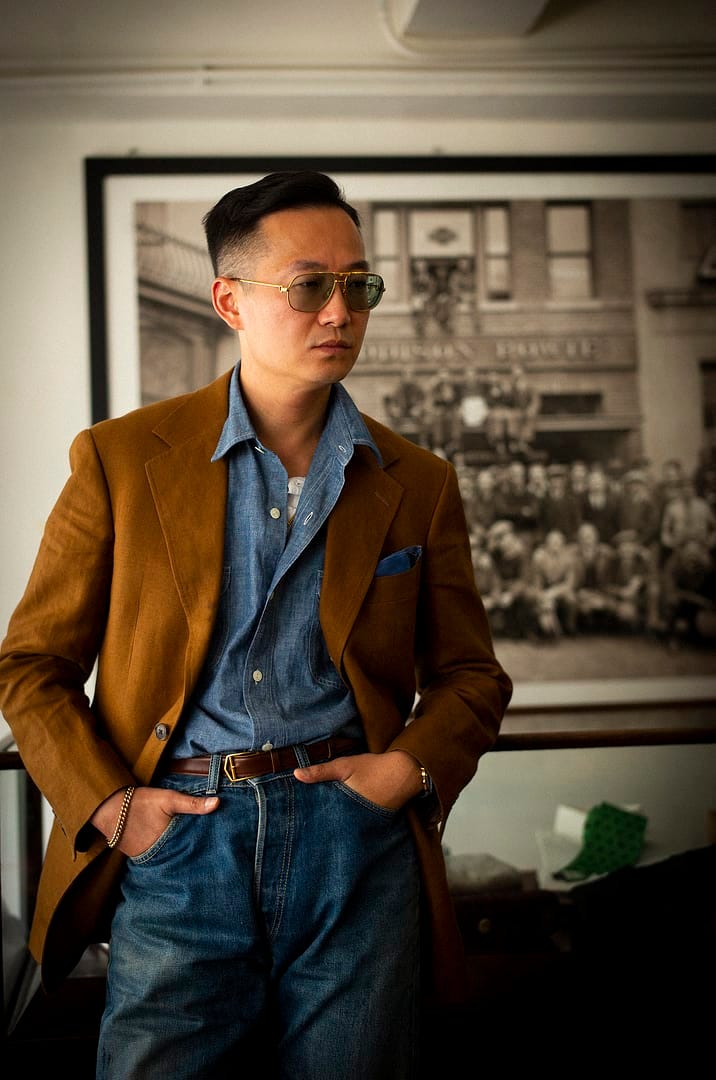
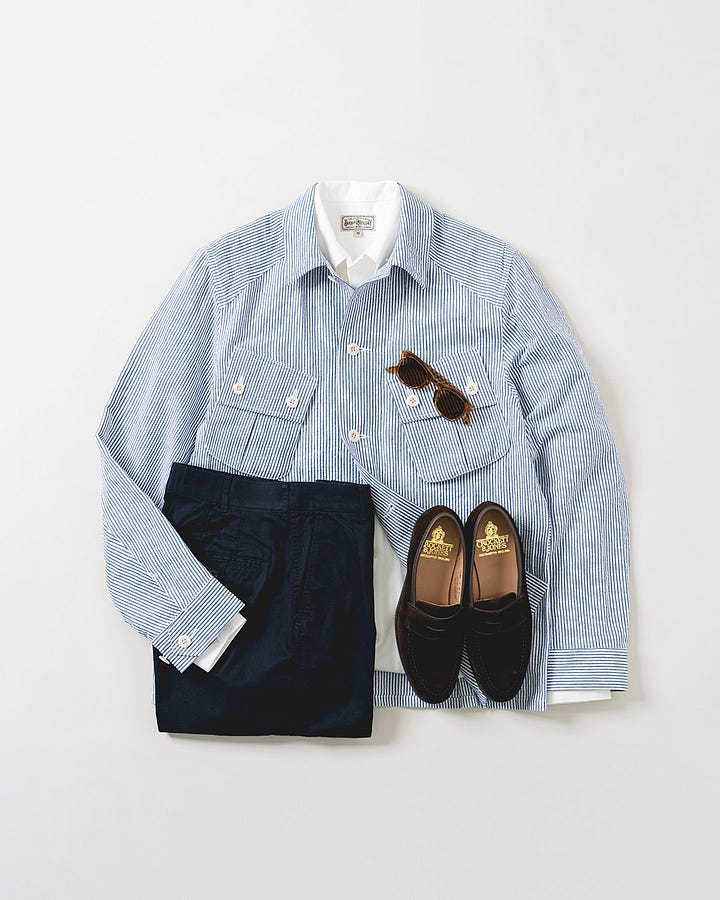
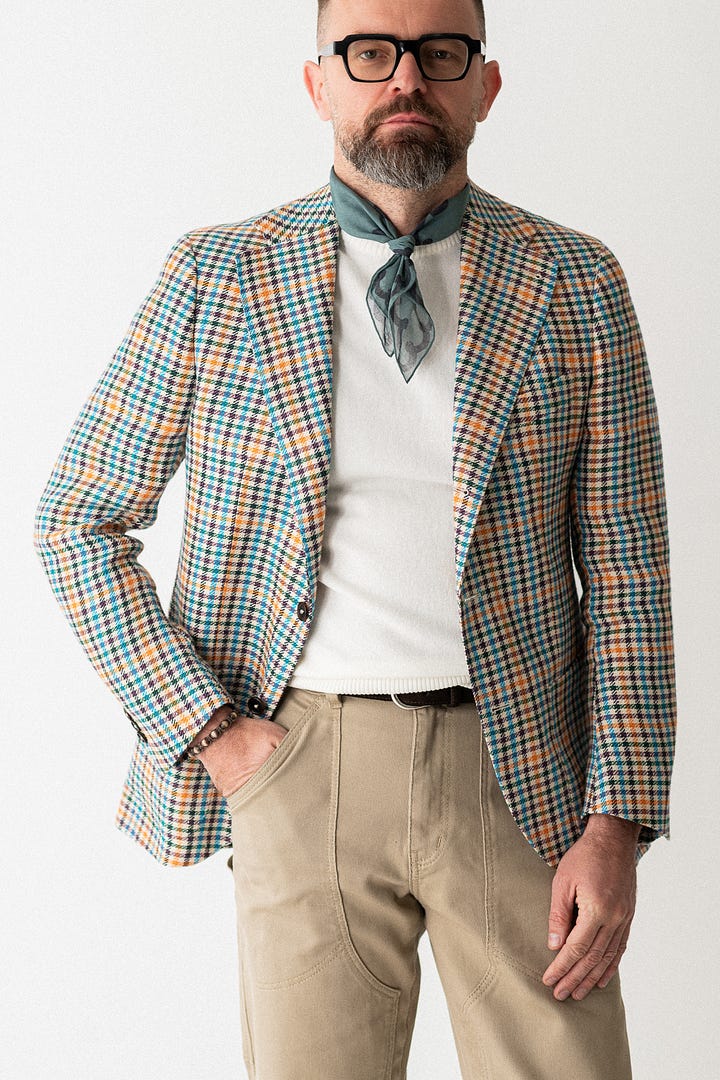
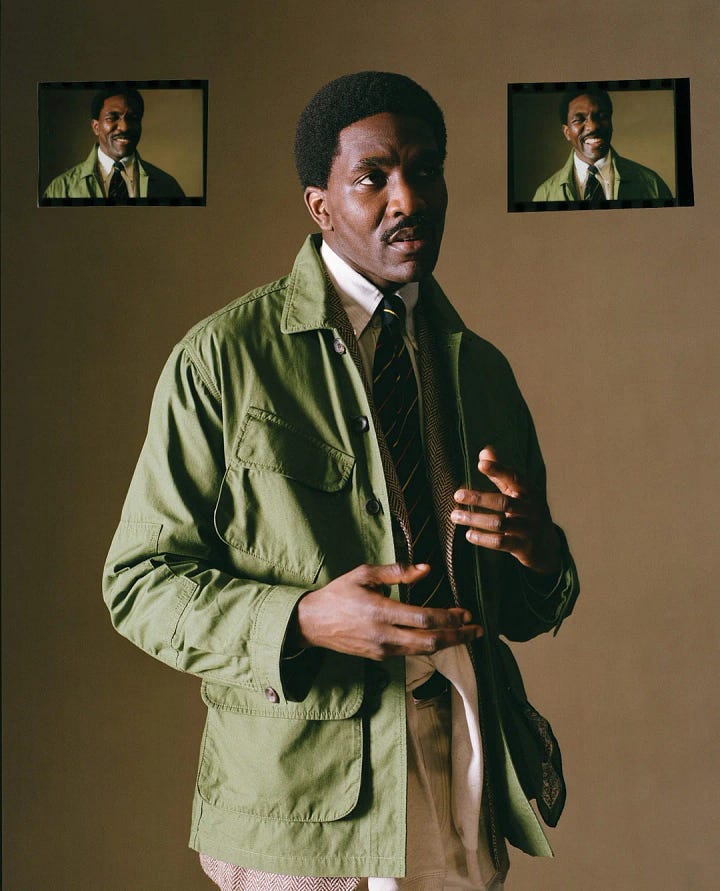
Also, I have to add that some brands did (and keep on doing) a very good job of attracting both groups of consumers, picking up on the trend and driving it further - trying to offer a way to dress down for the businessman and a way to dress up for the creative at the same time, without the fuss.
I don’t know how you feel about that, but I am really enthusiastic. One day I can build my outfit around a sportcoat, the next around a pair of carpenter pants - and the day after, wear these two together. And it all feels coherent, even in Instagram feed terms.

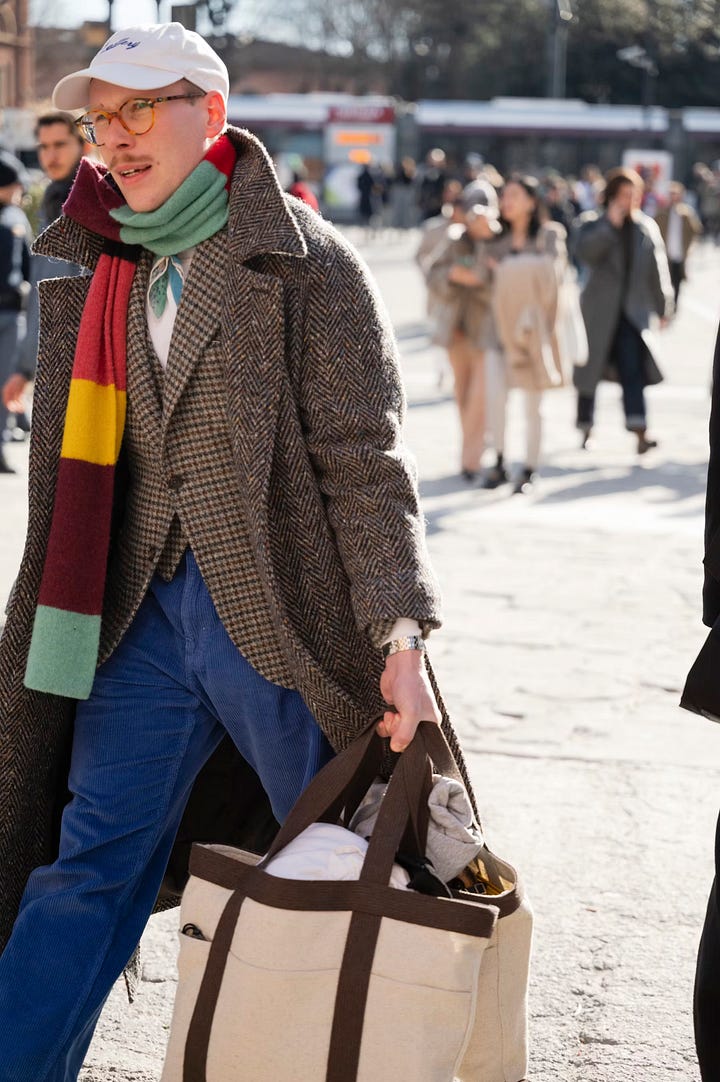
Just take a look at your favourite influencers - I bet not many of them stick only to polished, elegant suit-and-tie looks on a daily basis, even if they still consider themselves classic (Suzan, I’m looking at you). Many have widened their spectrum.
You can witness a similar trend at Pitti Uomo - Fortezza da Basso, which used to be a fortress of the suit and tie look, now hosts a third prominent group alongside the peacocks and the classic-style guys: casual-vintage-workwear-military-cowboy dressers, who often emerge from one of the two aforementioned archetypes. It’s good proof that one is not far from the other, as the workwear enthusiast may become the sportcoat guy and vice versa. Sometimes just for a while, on and off, depending on the mood.
Objectively, what we have is a very comfortable situation to live - I mean dress - in. We get a lot of freedom, yet we can still enjoy the safety of well-known options and combinations virtually unchanged for decades, which we can always come back to.

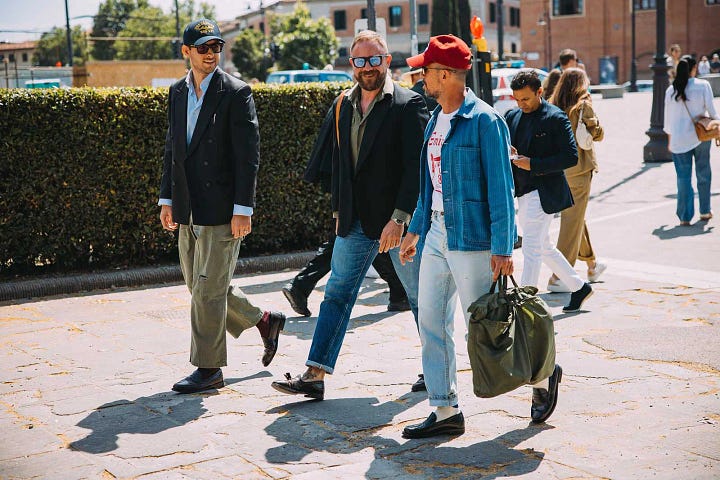
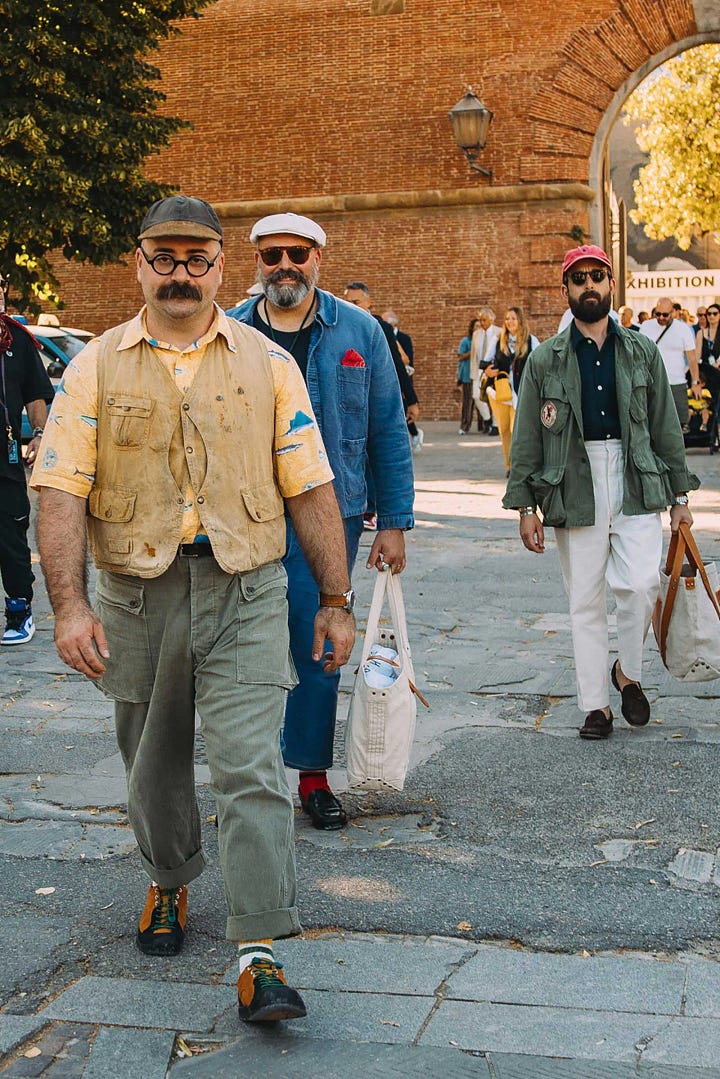
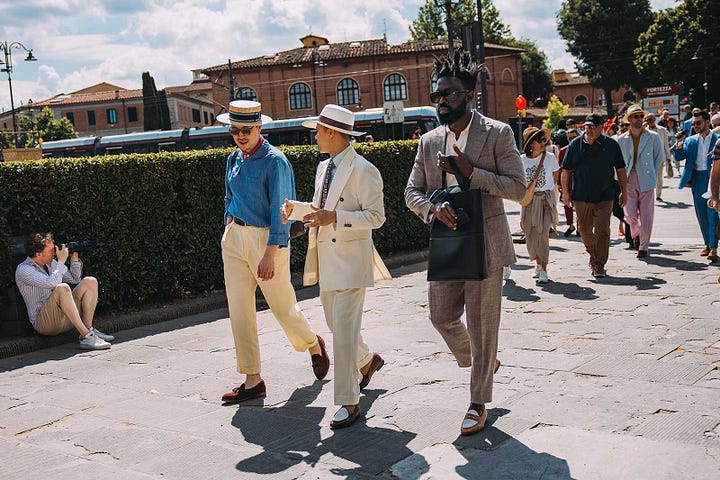
Will it ultimately fail as Third Way politics seemingly did? Yes and no. Probably, this moment won’t last forever; sooner or later we are going to come up with something new or reinvent what came before. Maybe eventually menswear will radicalise and become conservative-formal once again? Maybe. Or maybe the next great wave of casualisation will wash away all but a few last outposts of sportcoats on a daily basis? Maybe.
On the other hand, with the current prevalence of ultra-fast fashion, maybe the whole world of well-designed, well-made and well-styled fashion will stick close together, blending the division between casual and formal for good? Maybe.
Who knows?
I do not. But right now, I am going to seize the moment.




